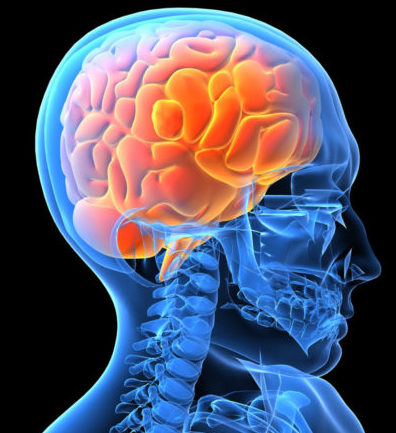
One of the companies I founded, MindFX Science is deeply involved in the science of how the brain functions under stress in sports and how to use all-natural neuro-nutrients to aid both seniors and athletes improve performance.
There are about 86 billion neurons in the human brain. They serve as the body’s wiring. Nerve signals are transmitted through the length of a neuron as an electrical impulse. When a nerve impulse reaches the end of the neuron it can jump over to the next cell using chemical messengers called neurotransmitters.
Acetylcholine is a very widely distributed excitatory neurotransmitter that triggers muscle contraction and stimulates the excretion of certain hormones. In the central nervous system, it is involved in wakefulness, attentiveness, anger, aggression, sexuality, and thirst, among other things.
Humans were created (or evolved―however you want to look at it) to be able to think and act fast. We have specific circuits in the brain that represent complex thoughts. When our brains send an electrical impulse through a particular circuit, it evokes the memory of a particular event―or in the case of athletic performance, a particular skill. This came in very handy for our ancestors. For example, when a caveman had to evade a predator such as a lion, making a sharp right turn while running at full speed simply required the activations of a particular circuit in the brain. The caveman wouldn’t have to relearn the complexity of balancing running speed; foot placement, momentum and equilibrium, each time such a dodging technique were required.
But activating that circuit requires a neurotransmitter called acetylcholine, which transmits the electrical impulses between nerve cells that don’t actually touch one another. Gaps between electrically transmissive nerve cells are called synapses. And in order to have a thought, perform some activity, recall some memory or skill, many nerve cells along a circuit must pass acetylcholine across these gaps, or synapses, in order to complete the circuits. But what would happen if the caveman were attempting to dodge a lion by making a sharp right turn, and the acetylcholine stayed in the synapses of the brain circuit representing that complex move? He would wind up continuously making right turns, and ultimately be caught by the lion. So nature has built in a safety check for acetylcholine to ensure that it only stimulates circuits as needed and very briefly. That solution is an enzyme that destroys acetylcholine in the synapses very quickly. That enzyme is called acetylcholinesterase and it has detrimental effects to athletes. It works very well and very rapidly. In fact, acetylcholinesterase is the fastest acting enzyme known. With thought circuits quickly cleared, cavemen (and we modern people too) can move from one thought or activity to the next very rapidly.
Unfortunately, experts believe that as we age, the amount of the healthy neurotransmitter deployed within our brain synapses decline. But the amount of acetylcholinesterase remains relatively high. This allows fewer acetylcholine neurotransmitter molecules to travel across synapses (gaps between nerve cells). And that makes electrical thought-circuits weaker. For example, it becomes more difficult to remember a phone number or a name. But some nutrients, like huperzine, have been shown to inhibit acetylcholinesterase, allowing more neurotransmitter molecules to cross the synapse gaps and complete thought circuits. The result is improved thinking and superior reaction time.
Here’s how it works for an athlete: A professional baseball player is facing a 95 MPH fastball. From the very start, a cholinergic impulse must register the first sight of the ball. Too little acetylcholine in the synapses, and the entire process is delayed, regardless of the health of the limbic region or the release of adrenal hormones, or glucose in the associated muscles.
Our Mind-FX products, support maximal levels of acetylcholine in the brain synapses, which supports optimal neuro-signaling throughout the cognitive process which allows the batter to see clearer, process data faster and react accordingly. An important difference in our products verses traditional sports supplements lies in the fact that our products involve the capacity of the brain to make split second decisions guiding muscle movement.
This same process can be realized by a tennis player returning a 120 MPH serve or a hockey goalie withstanding a 140 MPH slap shot or anyone dealing with lightning fast decisions.
The bottom line here is that we are on the threshold of realizing and understanding the role the brain plays in the dynamics of sports training and conditioning. Most athletes today only train their muscles for strength and repetitive motions without understanding how the brain and central nervous system fits into this process.

Recent Comments